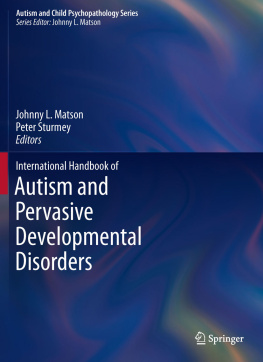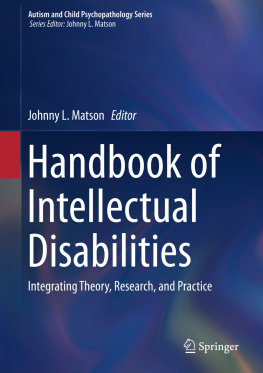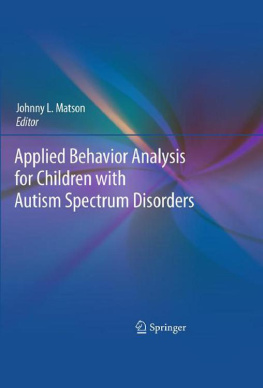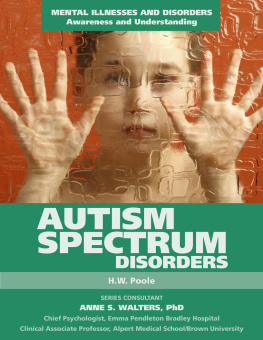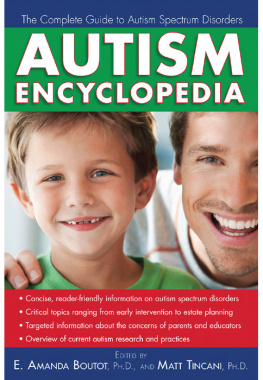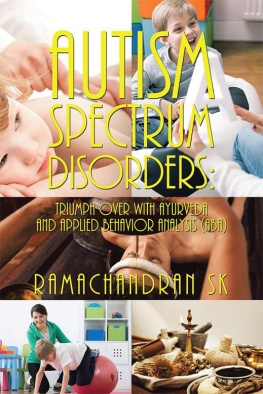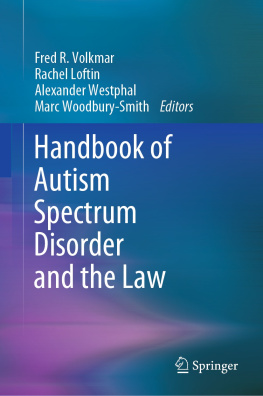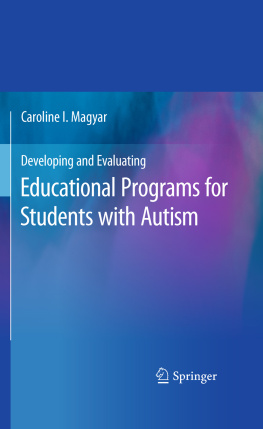Johnny L. Matson and Peter Sturmey (eds.) Autism and Child Psychopathology Series International Handbook of Autism and Pervasive Developmental Disorders 10.1007/978-1-4419-8065-6_1 Springer Science+Business Media, LLC 2011
1. History and Evolution of the Autism Spectrum Disorders
Autistic spectrum disorders (ASDs) are characterized by impaired social interactions and communication, as well as restricted and repetitive behaviors and interests. Impairment in each of these dimensions can vary in severity, and symptomatologies among individuals with ASDs are often quite diverse. Over the past 20 years, there has been a marked increase in the diagnosis of individuals with ASDs. In of this volume, there is at least some suggestion that changes in prevalence may be due to changes in, and broadening of, the diagnostic conceptualization of ASD. Indeed over the 60 years that autism has been recognized, there have been many changes in our understanding of this disorder. The historical changes in the conception of autism and other pervasive developmental disorders are outlined below.
In 1943, Dr Leo Kanner, an Austrian child psychiatrist at John Hopkins University, published the paper Autistic Disturbances of Affective Contact, where he described the behavior of 11 children. Observing one of the children, Kanner remarked He does not observe the fact that anyone comes or goes, and never seems glad to see father or mother or any playmate he seems almost to draw into his shell and live within himself (1943, p. 218). Prior to Kanners case studies, children with similar behaviors were likely seen as being either mentally retarded or insane. Indeed, since Kanner () labeled as having instinctive insanity had autism. However, it was not until Kanner that an attempt to classify autistic children was made, with explicit criteria with which to identify them.
Kanners detailed description of the 11 children in his landmark paper asserted that these children had a condition that differed markedly and uniquely from anything reported so far (p. 217). He borrowed the term autism from Bleuler (), a Swiss psychiatrist, who also coined the word schizophrenia. From the Greek autos (self) and ismos (a suffix of state or action), autistic was used to describe the autocentric thinking and apparent withdrawal from the social world by children with schizophrenia. It was also a defining trait of the children Kanner studied and gradually the adjective, autistic, led to the noun, autism.
Kanner () postulated that the fundamental disorder in children with autism was an inability to relate themselves in the ordinary way to people and situations from the beginning of life (p. 242). They were characterized by the following: (i) an autistic aloneness; (ii) a failure to use language to effectively communicate (e.g. mutism, echolalia, and overly literal language); (iii) repetitive, constricted activity and an anxiously obsessive desire for the maintenance of sameness (p. 245); and (iv) good cognitive potential shown in excellent rote memory (p. 243) and on performance tests. Indeed many of these distinctive and unusual behaviors described by Kanner remain cardinal to our definition and understanding of the disorder.
After publishing this first account, Kanner continued to work with autistic children, observing up to 120 further cases at Johns Hopkins Hospital. In 1956, he and Leon Eisenberg co-authored a paper revising what had come to be called early infantile autism. The authors proposed that the two defining features of autism were extreme self-isolation and an obsessive insistence on sameness, believing autism could be reliably identified by these two characteristics alone. The non-communicative use of language, or its delay or failure to develop in autistic children, was seen as a direct result of a lack of relatedness with other people. As such, language impairment was originally seen as neither a core characteristic nor a reliable indicator of autism. Michael Rutter () would later argue that language and prelanguage impairments are essential deficits of autism, asserting that this should be included as a diagnostic criterion along with the impairments in social relationships and insistence on sameness suggested by Eisenberg and Kanner.
In his earlier paper, Kanner () had earlier written a book called In Defense of Mothers, subtitled, How to Bring Up Children in Spite of the More Zealous Psychologists.
It was, however, Bettelheims work that served to widely disseminate the refrigerator mother theory of the etiology of autism in the medical field, and even popularized it in the public sphere. Bettelheim, an Austrian-born American child psychologist, was the most well-known proponent of the view that autism was due to unemotional or unavailable mothers. Bettelheims Feral Children and Autistic Children (, p. 467).
Bettelheims own life experiences deeply influenced his theories about autism. He had been detained in Nazi concentration camps, afterward writing about the loss of humanity he had witnessed in response to extreme situations (). In The Empty Fortress: Infantile Autism and the Birth of the Self (1967), Bettelheim likened the plight of autistic children to that of prisoners in German concentration camps. Autism, he contended, was a state of mind developed in reaction to extreme situations, created by maternal rejection and hostility. Such situations left children feeling hopeless, anxious, apathetic, and increasingly unable to communicate with the outside world. In response, they withdrew from reality into themselves.
A serious challenge to this psychoanalytic view of autism, as purported by Bettelheim, came with Rimlands book, Infantile Autism: The Syndrome and Its Implications for a Neural Theory of Behavior (1964). The parent of an autistic son himself, Rimland argued convincingly that there was no evidence to support a psychogenic theory of autism. Instead, he believed there was a neurological basis for the disorder. In contrast to the unsubstantiated psychoanalytic theories, Rimlands arguments were based on empirical research and strongly influenced the field of autism research.
In Kanners original description of autistic children (1943), he differentiated autism from schizophrenia, especially since some children with autism had been previously diagnosed with the latter disorder. He recognized that children with schizophrenia experienced some normal development before their behavior changed. Importantly, they withdrew from previously existing social relationships, while autistic children, he thought, failed from birth to ever form these social relationships. He viewed children with schizophrenia as trying to solve their problems by withdrawing from a world with which they had been engaged. Conversely, children with autism would cautiously begin to engage more with that world as they grew older.
Early researchers such as Bender () described nine criteria for schizophrenic syndrome in childhood, which was the working partys agreed upon term for labeling childhood psychosis, and represented his belief that these disorders were a childhood form of the later adult disorder. Interestingly, there is a high degree of overlap in these nine criteria and current diagnostic criteria for autistic disorder.

